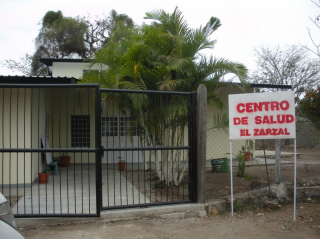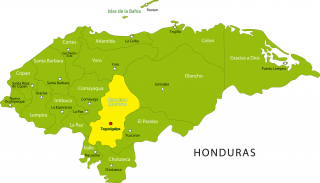El Zarzal, Honduras
![]()
![]()
![]()
![]()
![]()
![]()
![]()
![]() Click on Programs to learn more about their work in this community
Click on Programs to learn more about their work in this community
General Information

| Population* | 285 |
| Number of homes | 80 |
| Avg # of people per home | 3-4 |
| Primary Occupations | Agriculture (corn and beans) |
| Water System | Yes |
| Community Bank | No - Access to Guaricayán |
| Electricity | Yes |
| Corresponding Health Center & Distance |
CESAR- El Zarzal |
| Common Illnesses | Common colds, parasites, cervicitis |
| School Access and Distance |
Primary School - In Community |
| GPS |
N 14° 16.950’ W 086° 58.152’ |
| Municipality | San Juan de Flores |
| Department | Francisco Morazán |
| Distance from compounds | 40 minutes |
* Population does not reflect how many patients will be seen on medical
brigades as many people from surrounding communities come seeking
Medical Brigades medical attention.
Top Three Needs Expressed
The top three needs expressed by the key community members are road infrastructure, reconstruction of the school, and building a fence around the kindergarten.

El Zarzal is located in a valley in the central part of Honduras. The small community is located alongside a river in a valley dominated by sugarcane plantations. It is hot during the day and warm in the evenings.
Zarzal’s educational system includes Kinder and Primary schools (until 6th grade). There are 42 students and Keyla Patricia is the school director. It is approximated that about 80% of the community knows how to read and write.
El Zarzal has a water system that was reconstructed by the government in 2007. The system is good condition, as the water arrives every day, it is regularly chlorinated every 4 days, and 100% of homes are connected to the water system. There is a Water Council with 3 active members.
Zarzal has a health center in the community, staffed by nurse Oralita Benitez and supported by a small community health committee. However, dental care is not available.
Global Brigades and Oralita selected Zarzal as one of the next communities for implementing GB’s Community Health Workers (Guardianes de Salud) program. Program implementation began in June, 2010.
The most common illnesses seen by community members are respiratory infections, common cold, and intestinal parasites. Approximately 100% of the community is estimated to have latrines that currently function. 50% has eco-stoves (estufas justas) or electric stoves. About 25-50% is estimated to have concrete floors.
The average family income per month is estimated to be 2400 Lempiras, which is an approximate average of L480 (US $25.41) per person. The majority of homes are made of adobe and bahareque (stick and mud). The main form of employment is agriculture on owned land, and the main products that are cultivated in the community are corn, beans, and plantains. Members of Zarzal have access to credit through microloans offered through FINCA, though they have not recently been carrying out visits to the community, therefore they could be interested in forming a community bank in the future.
Zarzal is a small community and one of several communities served by CESAR-Zarzal, whose nurse has been very collaborative with Global Brigades in the past. Global Brigades’ Community Health Workers program selected Zarzal as a new community for CHW training in 2010 because of its’ commitment and collaboration with GB’s work.
Zarzal is not currently receiving medical brigades from any other organization. In 2008, Aanglidesh, the Development Ministry of the Episcopal Church, worked on an eco-stove project in Zarzal. In 2007, when SANAA reconstructed the water system, they also built new latrines.

Source of information: Key informant interview, Centro de Salud statistics
Date of interview: 22 April 2010
1The accepted regulation frequency for chlorinating water is every 4 days.
2CESAMO and CESAR are terms used for types of health centers. CESAMOs are larger, more comprehensive facilities that usually have a physician on staff at all times and occasionally a dentist. CESARs are more remote, less equipped facilities, usually with 1-2 nurses on staff.
3According to Red Solidaria and World Food Programme in Honduras, the average family is approximated at 5 people per household, the poverty line is L930 (US$49.23) per person per month, and the extreme poverty line is L617 (US$32.66) per person per month.